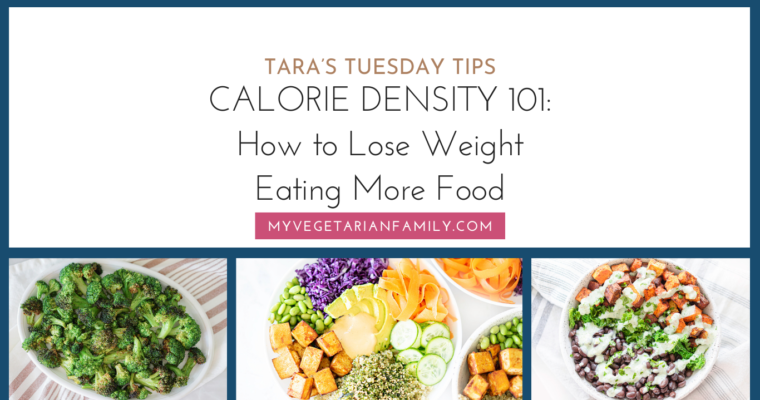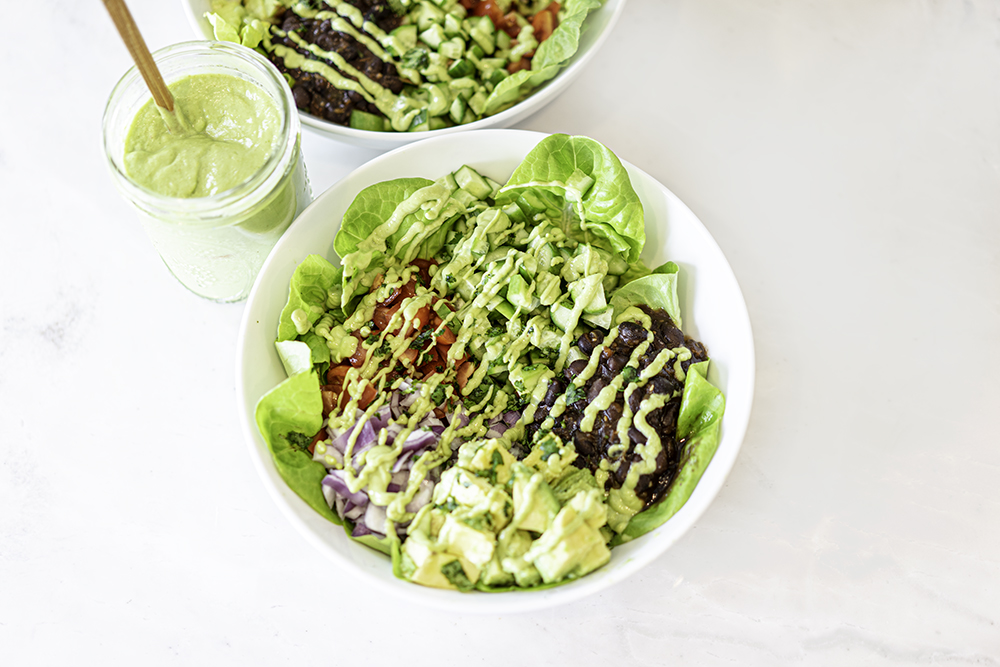For new or not so new vegetarians, getting enough iron does not need to be challenging or confusing BUT is SO important! Yes, the iron in meat is easier to absorb, but that does not mean that iron is not plentiful in a variety of plant-based foods! Vegan, vegetarian, or simply plant-curious? Together, let’s figure out how to get enough iron if you don’t eat meat!
Tara’s Tuesday Tips:
How to Get Enough Iron If You Don’t Eat Meat
When most people think of dietary iron, they think of meat. But that isn’t the only way to get iron from our foods! As with anything else in the world of being vegetarian, it takes a little preparation + knowledge. That is where I come in! I am here to assure you that you absolutely can get enough iron from plants if you don’t eat meat!
What is Iron?
Iron is a mineral vital to the proper functioning of our bodies. Responsible for oxygen transport, hormone production, DNA synthesis, and most importantly growth + development + meeting energy needs.
There are 2 types of iron: heme (found in meat, poultry, seafood) and non-heme (found in plants and iron-fortified foods, absorbed at a lower rate).
How Much Iron Do We Need?
These recommendations are from The Food and Nutrition Board (FNB) and are based on age, stage, and gender for Americans. Keep in mind that iron needs differ based on any medical conditions you might have, medications, and health of the microbiome/GI tract. These numbers are general and are not specified for vegetarians vs non-vegetarians.
- Men 19-50 years old: 8 mg daily
- Women 19-50 years old: 18 mg daily
- Pregnant Women 19-50 years old:27 mg daily
- Lactating Women 19-50 years old: 9 mg daily
- Men 51+ years old:8 mg daily
- Women 51+ years old: 8 mg daily
Who Is at Most Risk for Iron Deficiency
When iron stores in the body run out, that results in iron deficiency anemia. This means that there will be less oxygen being carried throughout the body because there are less efficient red blood cells. People with this can experience fatigue, irregular or fast heart rate, weakness, or pale skin to name a few. Here is who is at most risk of an iron deficiency:
- If you are pregnant or have a heavy menstrual period
- Plant-based athletes
- Infants
- Frequent blood donors
- Poor/inadequate nutrient or calorie intake
- Chronic diseases (cancers, heart failure, GI disorders)
Tara’s Top Tips to Ensure Adequate Iron Intake for Vegetarians
- Eat a variety of foods! Aim for 30 different plants per week.
- Don’t be afraid of soy.
- Separate any coffee, tea, red wine, or cocoa from your meals.
- If you take a calcium supplement, avoid taking it with iron-rich foods.
How to Increase Absorption of Plant-Based Iron
- Pair iron-rich foods with Vitamin C (squeeze lemon or other citrus on your foods, add bell peppers or strawberries to recipes)
- Add foods high in lysine (peas, quinoa, peanuts, legumes)
- Eat sprouted foods
- Enjoy tempeh regularly (this fermented soy helps make iron more available in the body!)
- Cook in a cast-iron skillet (not evidenced-based but worth a try if you are deficient).
Tara, Do I Need an Iron Supplement?
Only if you have had blood work showing low iron! See your healthcare provider to determine the appropriate amount + type of supplementation you need to help correct your iron status. Iron dosing can easily go wrong if not managed properly! Don’t ever supplement blindly!
Plant-based Foods Rich in Iron
LEGUMES, PEAS, LENTILS (1 CUP, COOKED)
- Lentils: 3.3 mg
- Lima Beans: 4.1 mg
- Black-Eyed Peas: 4.3 mg
- Navy Beans: 2.2 mg
- Chickpeas: 2.4 mg
- Kidney Beans: 2 mg
- Pinto Beans: 1.8 mg
- Edamame: 4.4 mg
GRAINS (1 CUP, COOKED)
- Spelt: 3.7 mg
- Amaranth: 5.2 mg
- Quinoa: 2.8 mg
- Oats: 1.2 mg
NUTS & SEEDS (1 CUP)
- Cashews: 7.8 mg
- Almonds: 5.3 mg
- Macadamia Nuts: 3.5 mg
- Walnuts: 9 mg
- Flaxseeds: 9.6 mg
- Pumpkin Seeds: 11.4 mg
VEGETABLES (1 CUP, COOKED)
- Spinach: 6.4 mg
- Broccoli: 1 mg
- Soybeans: 4.4 mg
- Swiss Chard: 4 mg
- Brussel Sprouts: 1.8 mg
- Lima Beans: 4.2 mg
- Asparagus: 2.9 mg
- Mushrooms: 2.7 mg
- Green Peas: 2.5 mg
- Potato (one baked): 1.9 mg
- Sweet Potato: 1 mg
OTHER
- Blackstrap Molasses (2 tbsp): 1.9 mg
- Dark Chocolate (one ounce): 3.4 mg
- Prune Juice (1cup): 2.9 mg
- Canned Coconut Milk: 7.5 mg
- Dried Thyme (1 tsp): 1.2mg
- Black Olives (1cup): 8.5mg
Sources:
1: https://www.dietaryguidelines.gov/resources/2020-2025-dietary-guidelines-online-materials/food-sources-select-nutrients/food-1
2: usda.gov
My Favorite Recipes Packed with Iron!
Spinach Artichoke Cauliflower Gnocchi Bake (Dairy-Free!)
Sweet and Spicy Air Fryer Brussels Sprouts
Oil-Free Balsamic Roasted Brussels Sprouts
Sun-Dried Tomato Brussels Sprouts
Sweet Potato Cookies (No Egg + GF + Vegan)
Vegetarian Habanero Chili Recipe
Oil-Free Everything Bagel Hummus
Dairy-Free Silken Tofu Ricotta Recipe
Food For Thought
One thing to remember when it comes to improving iron status is that it is not realistic to be meticulous with counting every single milligram of iron going into your body from your food. It can be overwhelming to count every milligram of anything. I am not a fan of keeping track of foods this way. Instead, you will benefit greatly from understanding what to look out for if you might be deficient and the best ways to prevent deficiencies. Above all, never ever ever ever supplement blindly. Get blood work, eat a variety of plants, and pay attention when your body sends you signals.
If you are a new vegetarian, vegan, or a plant-curious eater, balance, balance, balance! Even getting enough iron does not need to be complicated, expensive or cumbersome. More is not always better, variety is key, find purposeful movement that makes you happy, and food is so much more than fuel. Life according to Tara 😉.
All the best,
Tara 🌿💚
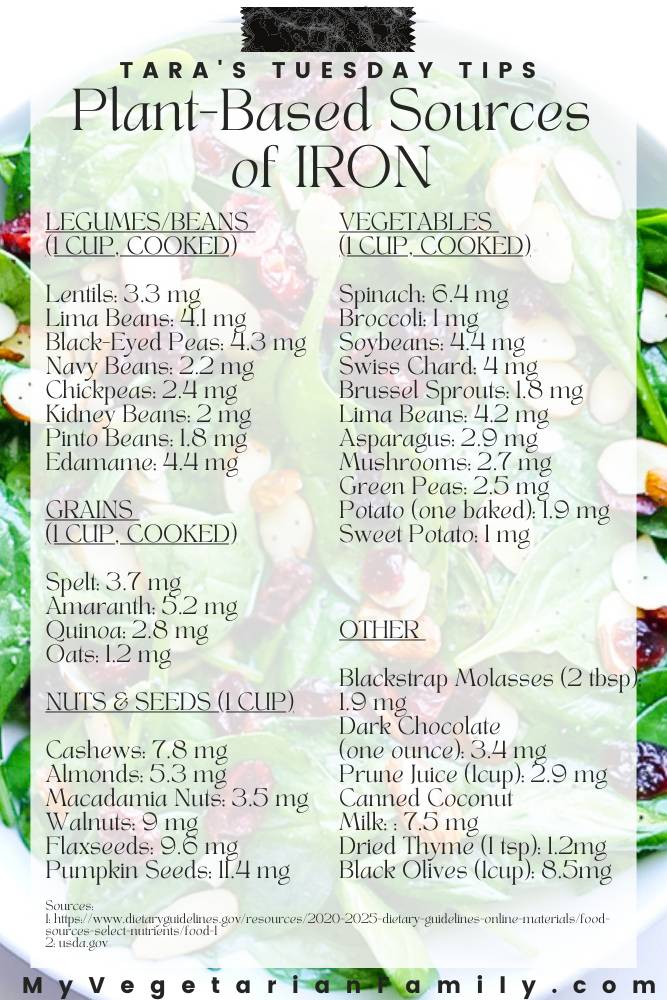
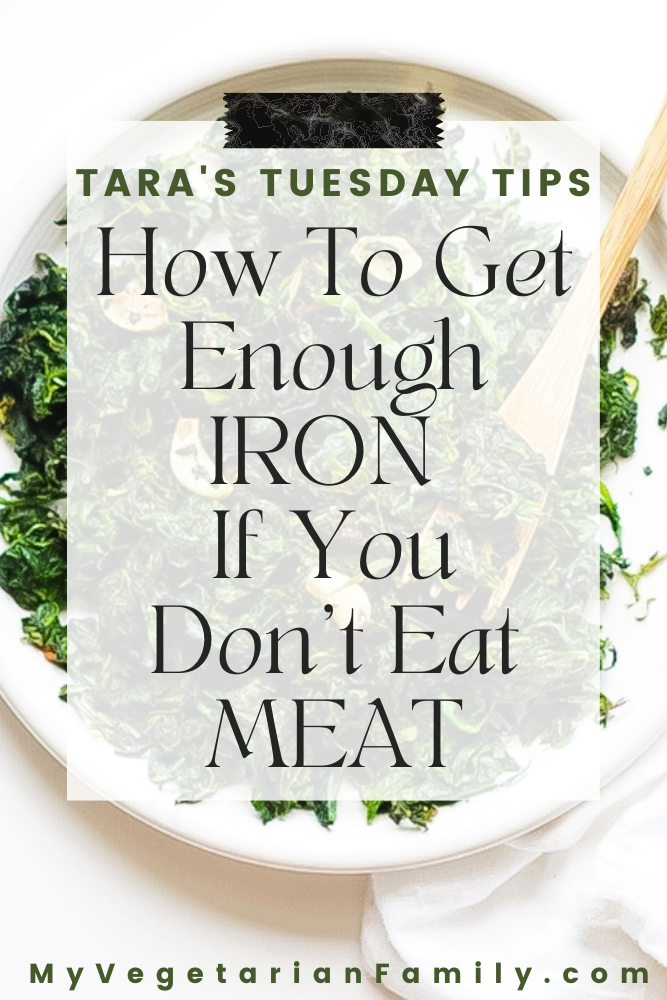
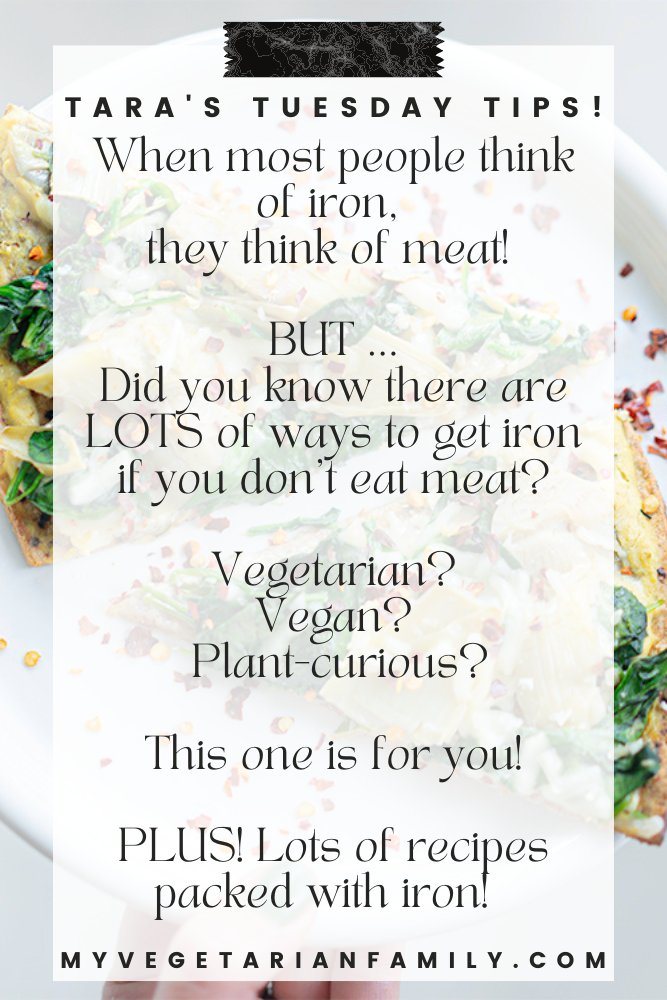
POST UPDATED 12/20/2023 WITH REVISED IRON CONTENTS OF FOOD
⭐Did you LOVE learning how to get enough iron if you don’t eat meat? Leave a comment below!
📸I love to see your creations! Follow me on Instagram @myvegetarianfamily and hashtag it #myvegetarianfamily
📩Be sure to subscribe here to my weekly emails for tips + recipes so that you never miss a veggie thing!

